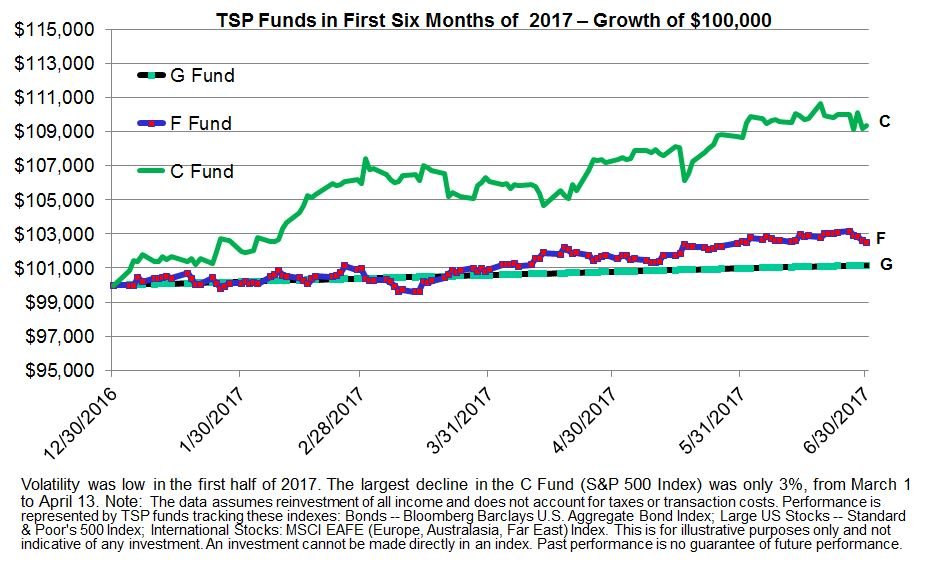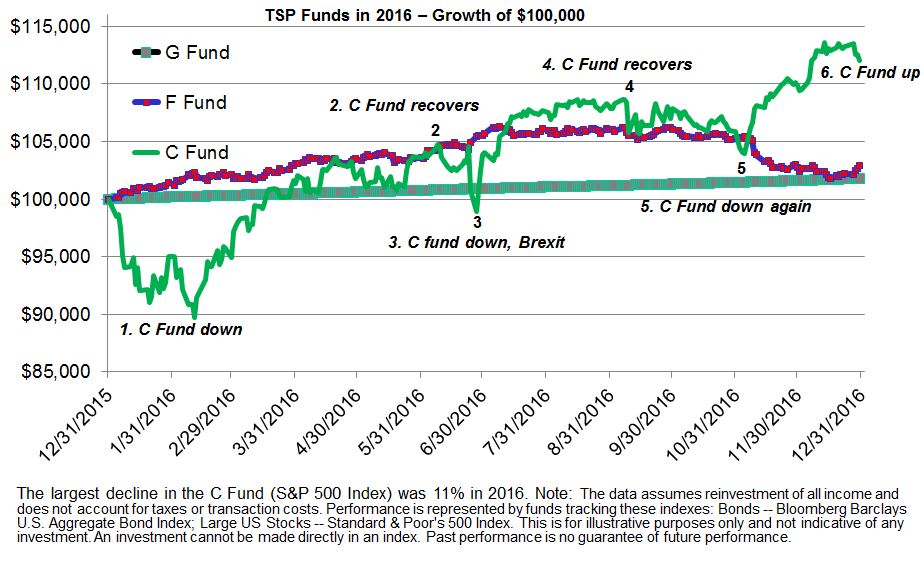
What next for your TSP account?
Senior Correspondent Mike Causey says past performance isn't a predictor in financial markets, and federal investors are nervously wondering what to do with their...
Depending on your age, location, education and interests, the phrase, “What is past is prologue” can either mean Shakespeare, the inscription on the National Archives Building in D.C.’s Federal Triangle area or an episode of Star Trek. And while the term covers a lot of territory, investing for your retirement nest egg isn’t necessarily one of them. Smart investors instead repeat the mantra that past performance is no guarantee of future performance. As in stuff happens. What goes up must come down, etc. Repeat as necessary!
Many feds and retirees with Thrift Savings Plan accounts got a jolting reminder of that thanks to the Great Recession. The stock market crashed/corrected and many people fled the stock-indexed C, S and I funds into the “safety” of the no-surprises treasury securities G fund. Many who moved to the G fund also stopped buying the C, S and I funds, which—because they were down—were on sale.
Investments in the TSP are an important part of the retirement program for workers and retirees under the Civil Service Retirement System. But for the majority of feds — who are under the less generous FERS plan — investing (wisely) in the TSP is critical. When Congress set up the FERS program to replace the CSRS plan, it was estimated that FERS retirees would get anywhere from one-half to one-third of their total retirement income from their TSP account. Assuming they have one.
With a major stock market correction long overdue, many feds and retirees are wondering what, if anything, they should be doing now. And what, if anything, they should do when Wall Street tanks.
Arthur Stein, a well-known Washington-area financial planner, says, “The best way to describe the TSP funds — and the stock and bond markets — during the first six months of 2017 is ‘placid.'” As in low volatility with a gradual upward trend. The other news, he said, “is that the I fund (international stock index) has finally rewarded investors with double digit-returns.”
The returns in the first half of 2017 were positive for all funds.
| TSP Returns in First Half of 2017 | ||||||||
| Time period | G Fund | F Fund | C Fund | S Fund | I Fund | |||
| First six months, 2017 | 1.2% | 2.5% | 9.3% | 7.4% | 14.1% | |||
Source: Share prices from TSP.gov. Calculations by Arthur Stein, CFP
According to the Wall Street Journal, stock market volatility in the second quarter was the lowest in more than 50 years!
Volatility is the frequency and magnitude of changes in the price of a security. Stocks and the TSP funds that own stocks (C, S and I) are usually significantly more volatile than bonds and the TSP bond funds (F and G). Volatility is one form of investment risk.
Low volatility looks like this, the first six months of 2017.

One of my clients said that she “wishes her EKG looked that even.”
Volatility varies by the type of fund. The G fund has no volatility. It slightly increases each time interest is paid into the fund, but never declines in value.
The F fund does rise and fall in value as interest rates fluctuate. Still, it is considered to have low volatility. During the first three months of 2017, there were times when the value of an F fund investment would have been slightly above or below a G fund investment of the same amount. But the fluctuations were still less than the stock funds.
Higher market volatility looks like returns in 2016. Higher stock market volatility caused the C (and S, not shown) fund to underperform the bond funds for various periods of time.

Stein, who will be our guest on today’s Your Turn radio show (10 a.m. EDT on Federalnewsradio.com or WFED 1500 AM), says, “Higher volatility is a risk that TSP investors need to be prepared for. Stock market volatility is normally higher than 2017 and often higher than what occurred in 2016. And U.S. stock markets are overdue for declines of 5 percent, 10 percent and 20 percent.”
“Historically, stock market declines were a natural part of investing. Declines varied in intensity and frequency, but they were common events. What is unusual at this point is the lack of major declines.”
“Help assuage your fears when TSP funds do decline.”
“My strategy for my investment clients is to keep them invested in their agreed allocation between stock and bond funds until declines occur. I will then look for opportunities to sell bond funds and buy stock funds to rebalance back to that stock/bond allocation.”
“Buying stock funds after a major stock market decline, when prices are low, is a strategy requiring discipline to buy when others are selling and the patience to wait for recoveries.”
“What is your strategy?”
If you have questions, send them to me, before showtime, at mcausey@federalnewsradio.com.
Nearly Useless Factoid
Hummingbirds are the only birds known to fly backward.
Source: Discover Magazine
Copyright © 2025 Federal News Network. All rights reserved. This website is not intended for users located within the European Economic Area.
Mike Causey is senior correspondent for Federal News Network and writes his daily Federal Report column on federal employees’ pay, benefits and retirement.
Follow @mcauseyWFED
Related Stories





